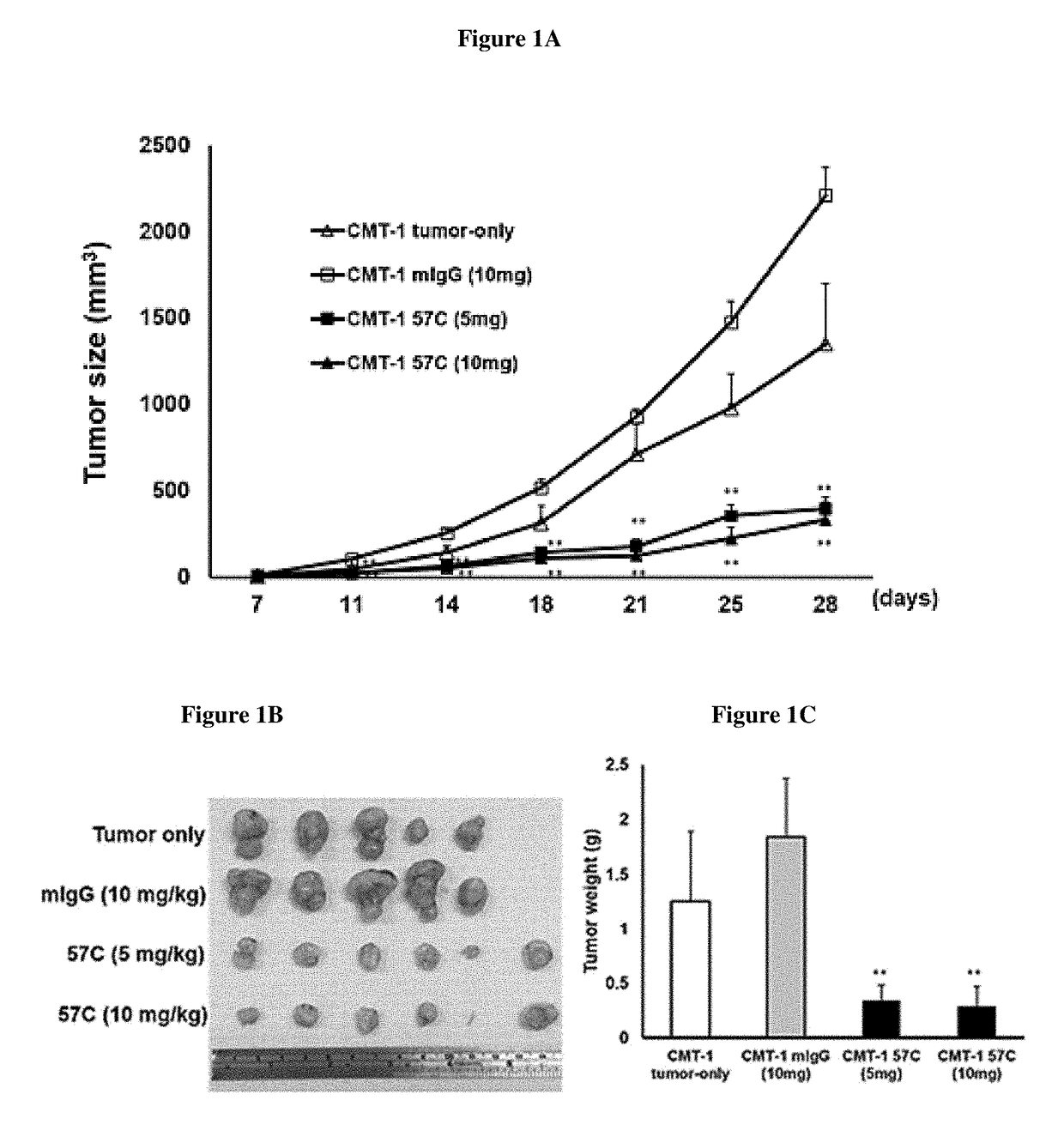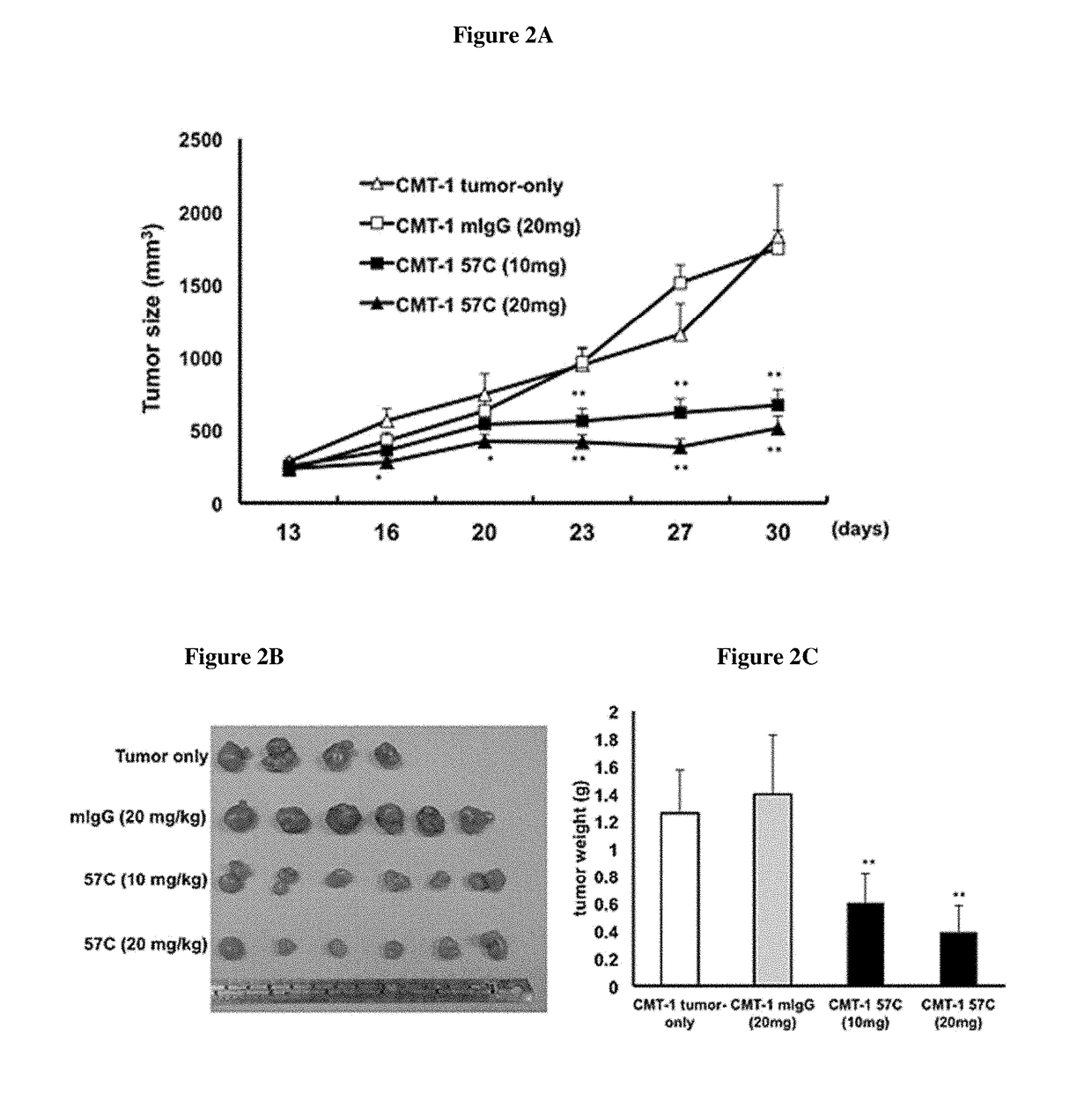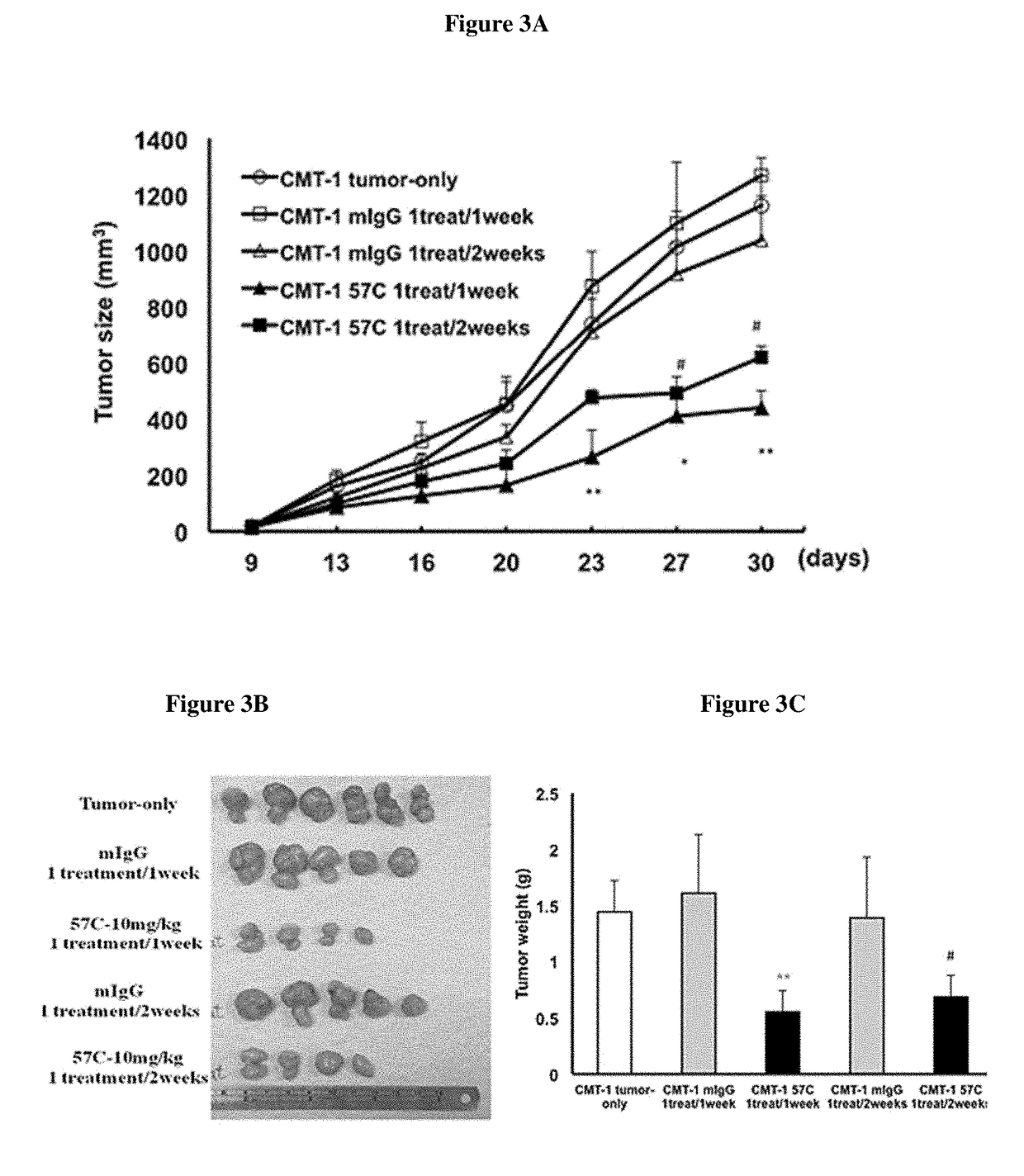Antibodies which specifically bind to canine vascular endothelial growth factor and uses thereof
a technology of vascular endothelial growth factor and antibodies, which is applied in the direction of antibody medical ingredients, extracellular fluid disorder, drug compositions, etc., can solve the problems of limiting tumor growth and metastatic ability, canine death, etc., and achieve the effect of reducing cancer cell growth and tumor volum
- Summary
- Abstract
- Description
- Claims
- Application Information
AI Technical Summary
Benefits of technology
Problems solved by technology
Method used
Image
Examples
example 1
nt of Antibodies Binding to Dog VEGF
[0088]Mammalian and E. coli cells were engineered to express recombinant a canine VEGF protein. The recombinant protein produced in the mammalian and E. coli host cells were purified. The mammalian cell-produced VEGF was used as an antigen to immunize mice. Spleens from the mice producing anti-canine VEGF antibodies were collected and fused with a myeloma cell line using standard techniques. The fused hybridoma cells were screened twice using ELISA to identify positive clones. The mammalian cell-produced VEGF was used in the first round of screening, and the E. coli-produced VEGF was used in the second round of screening to identify hybridoma clones that recognized the peptide sequence of VEGF rather than the carbohydrate moieties that may be present on VEGF protein produced in mammalian cells.
[0089]The hybridoma clones positive for the production of anti-canine VEGF antibodies were inoculated into mice for ascite production. Antibodies were purif...
example 2
Anti-Canine VEGF mAb 57C in Reducing Tumor Size and Volume
[0091]Eight-weeks-old female NOD / SCID mice were used in the experiments described herein. Each mouse was subcutaneously (s.c.) injected with canine mammary tumor cells (CMT-1 cells) (1×106 cells / mouse) in the left mammary fat pad. To mimic application to a canine after surgery and assess the effect of the antibody on the growth of residual tumor cells on the primary site, the mice were administered antibodies one day after injection of the CMT-1 cells. Mice were randomly assigned to four groups and subcutaneously administered mouse IgG (mIgG; 10 mg / kg (n=5)) or the anti-canine VEGF antibody 57C at two different dosages (5 mg / kg (n=6) or 10 mg / kg (n=6)) three times per week or received no treatment (CMT-1 tumor only (n=5)) for the duration of the experiment. The mice were sacrificed 30 days after the initial CMT-1 injection, and the tumors were collected and weighed. As demonstrated in FIGS. 1A-1C, mice that received either do...
PUM
| Property | Measurement | Unit |
|---|---|---|
| time | aaaaa | aaaaa |
| length | aaaaa | aaaaa |
| pharmaceutical composition | aaaaa | aaaaa |
Abstract
Description
Claims
Application Information
 Login to View More
Login to View More - R&D
- Intellectual Property
- Life Sciences
- Materials
- Tech Scout
- Unparalleled Data Quality
- Higher Quality Content
- 60% Fewer Hallucinations
Browse by: Latest US Patents, China's latest patents, Technical Efficacy Thesaurus, Application Domain, Technology Topic, Popular Technical Reports.
© 2025 PatSnap. All rights reserved.Legal|Privacy policy|Modern Slavery Act Transparency Statement|Sitemap|About US| Contact US: help@patsnap.com



